This Friday meet TJ Rogers of Green Lake County, Wisconsin. Growing up in a family of foresters, TJ spent a lot of time in the woods, building and growing his conservation land ethic from the ground up. As an adult, he purchased 60 acres in the area with the hope of restoring the land to its natural beauty by creating habitat and attracting wildlife.
Accomplishing Habitat Goals
Sandhill Cranes fly in, landing near the wetland to feed and rest on TJ’s acreage. They disappear into the planted food plots as the sound of songbirds overwhelms the ears. Thanks to a wetland reserve easement through the Agricultural Conservation Easement Program, offered by USDA’s Natural Resources Conservation Service, the land is an oasis for birds, pollinators and other wildlife to feed, nest and rest.
“I knew this program would be just right for my land to accomplish my wildlife habitat goals,” said TJ.
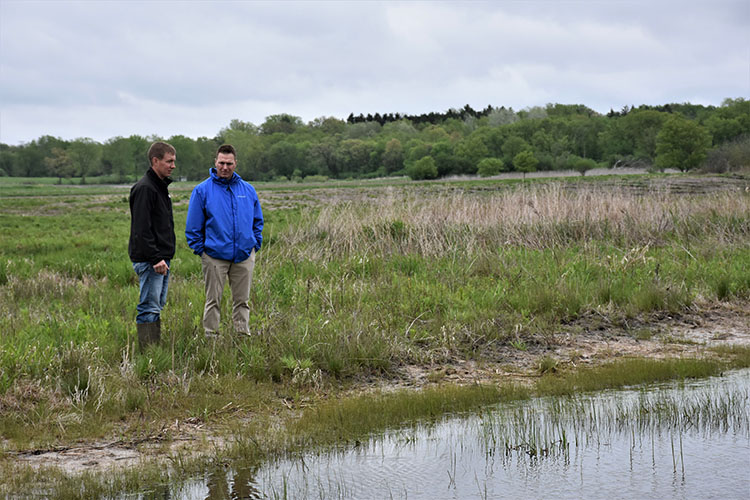
Once he heard about the program details, he saw value in putting the land back into wetlands. The easement consists of five wetland scrapes, totaling just over two acres. Wetland scrapes are installed in wet areas to retain water and slow the rate of runoff, creating shallow water bodies that also benefit wildlife.
“This land flows into the Puchyan River, which is the outlet for Green Lake, which meets the Fox River and eventually Green Bay,” said NRCS District Conservationist Caleb Zahn. “This land is vital in helping prevent runoff. We have had a lot of excess water and runoff this year, including fast snowmelt. This easement establishment will be a great help in holding that excess water in the area.”
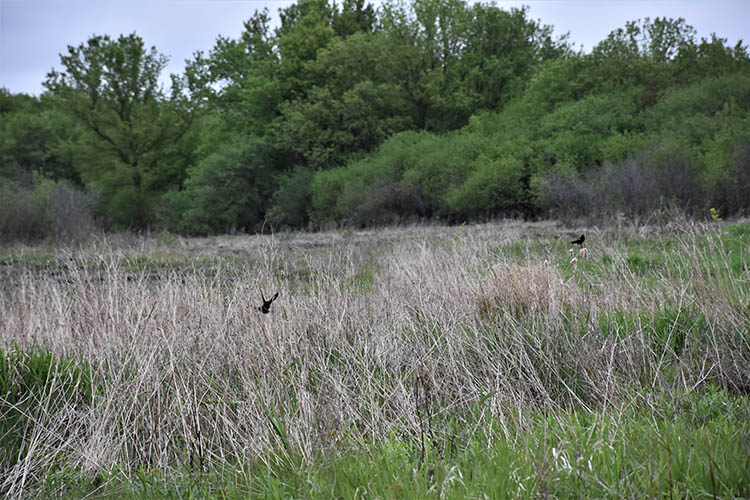
A Place for Pollinators
Along with the wetland scrapes, over 39 acres of native pollinator seed mix were planted, including species like Yellow Coneflower, Bergamot, Big Bluestem and Black-eyed Susan. NRCS recommended a diverse species mix of four grasses, and thirteen forbs/legumes.
“TJ has done a great job maintaining the easement and he is also working to alleviate invasive species on the property,” said NRCS Soil Conservation Technician Brian Kind.
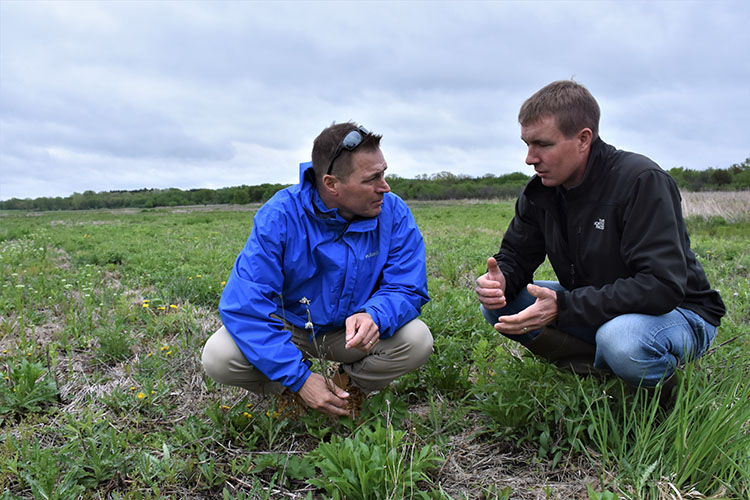
Mowing in the first year before seed development is necessary to prevent weed and invasive species establishment. Mowing the pollinator habitat also establishes new growth.
“We are glad to have those areas seeded down now to prevent runoff, whereas before, they were so wet, we couldn’t plant or farm them well,” explained TJ.
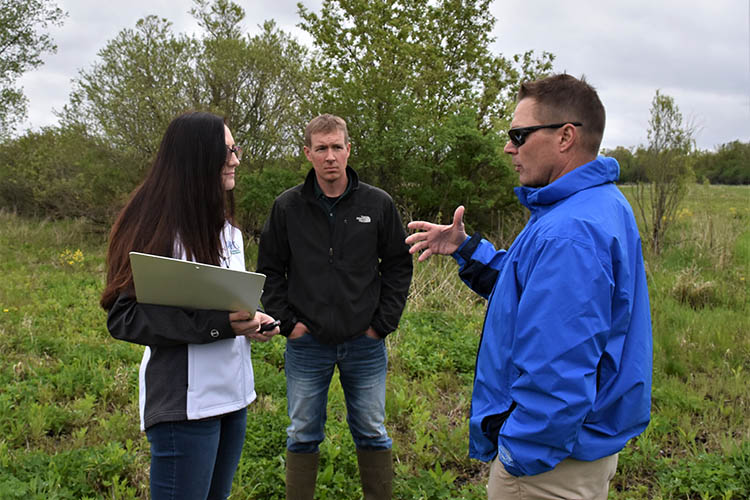
An Opportunity for Wildlife
Additionally, TJ added add three food plots to the easement to create opportunities for more wildlife. “We planted turnips and some other species to bring wildlife in,” he said. An increase of wildlife on the property can also be attributed to the trails TJ and NRCS added to monitor the scrape ponds.
“There were always geese flying over and now they are landing out here. They actually have a place to feed and rest,” TJ said. “There are so many more ducks than there have ever been. Deer and turkey, too. What’s so cool about this whole project is how quickly it changed the landscape out here and how many more birds, ducks, songbirds, pollinators and other wildlife and beneficial insects are around. It’s just amazing and rewarding to see.”
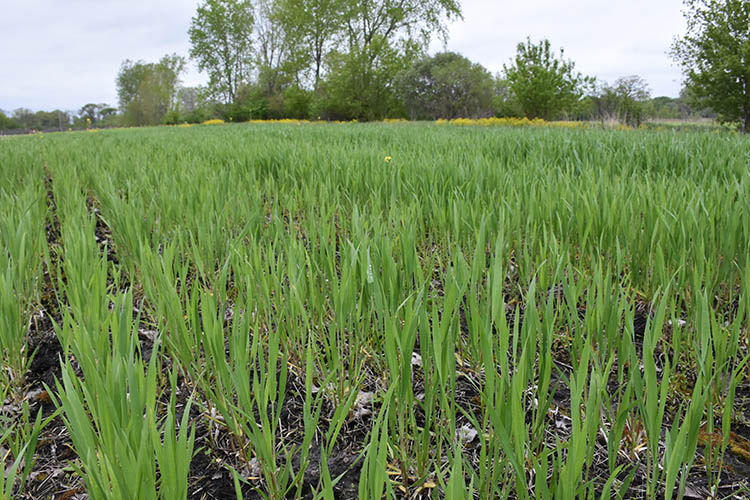
TJ allowed a conservation partner to complete a multi-year butterfly study on the property. The study observers found more species this year than they have ever before, which is proof of success in the effort to increase wildlife and pollinators on the property.
“NRCS easements are a great solution for marginal cropland that was originally wetland,” he said. “We navigated the process together. The process was a real learning opportunity, and NRCS staff are certainly experts in this field. Understanding the ecology and biology of the project and why they do certain things was eye opening and a great opportunity for me.”
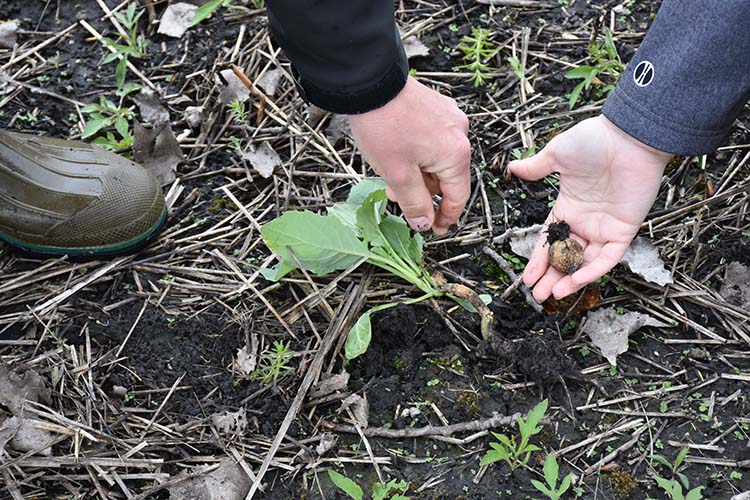
More Information
Each Friday visit local farms, ranches, forests and resource areas through our Fridays on the Farm stories. Meet farmers, producers and landowners who are working to improve their operations with USDA programs.
USDA offers a variety of risk management, disaster assistance, loan and conservation programs to help agricultural producers in the United States weather ups and downs in the market and recover from natural disasters as well as invest in improvements to their operations. Learn about additional programs.
For more information about USDA programs and services, contact your local USDA service center.
Tivoli Gough is a public affairs specialist with NRCS in Wisconsin.


